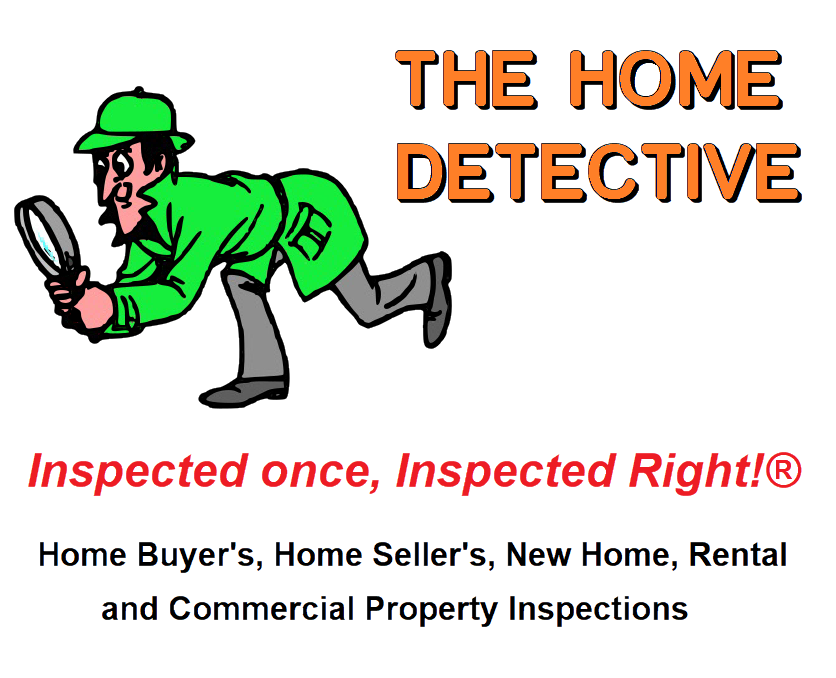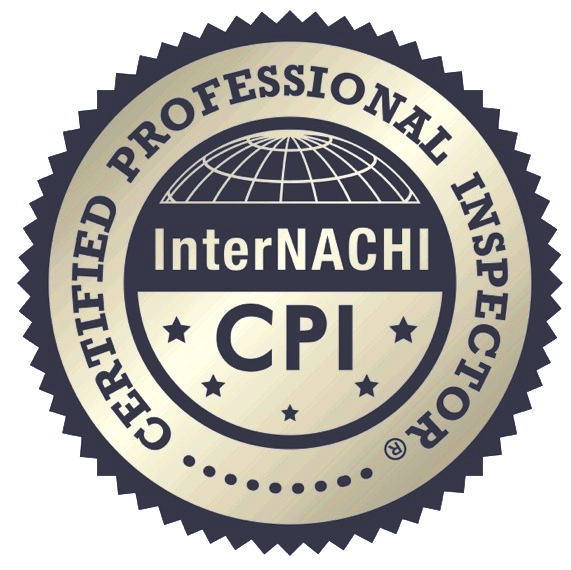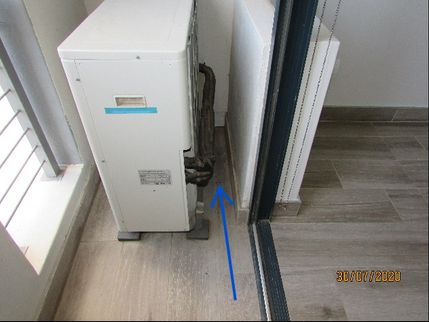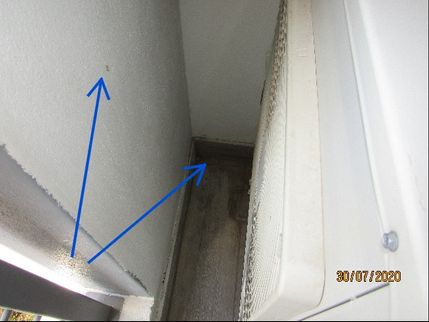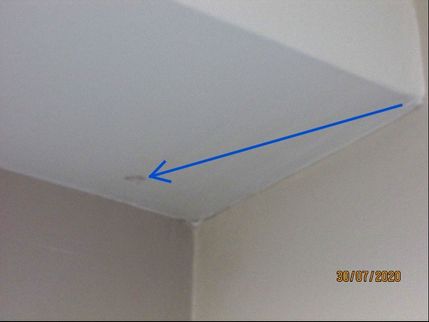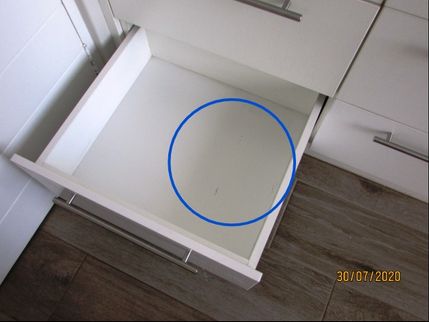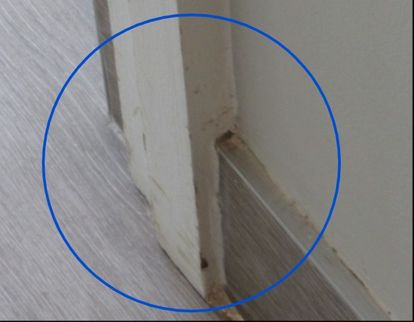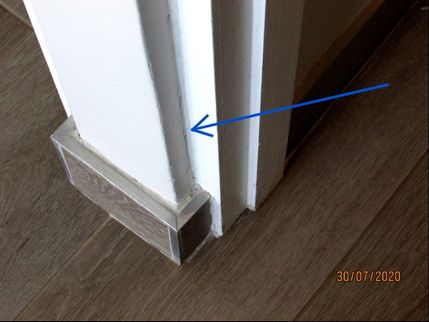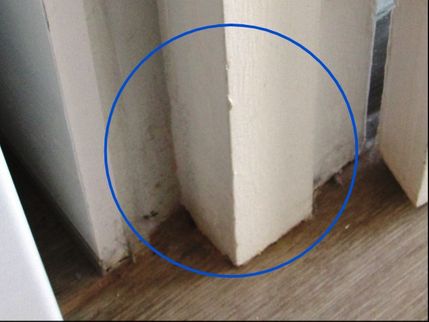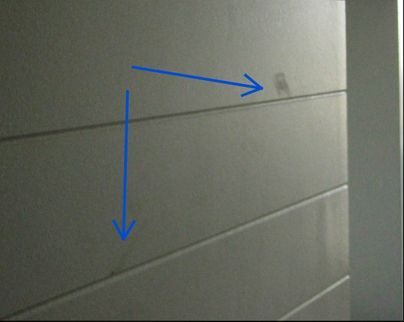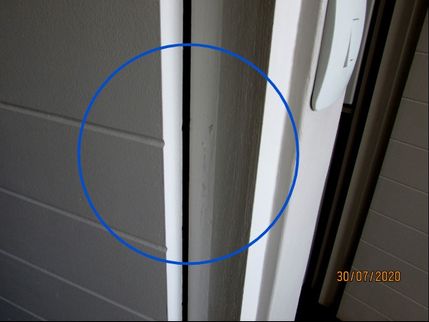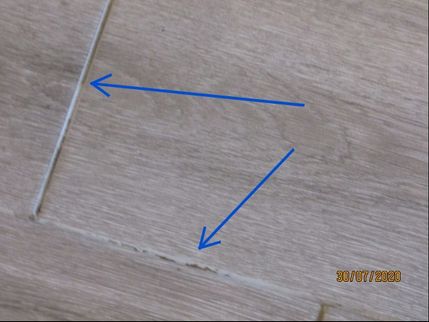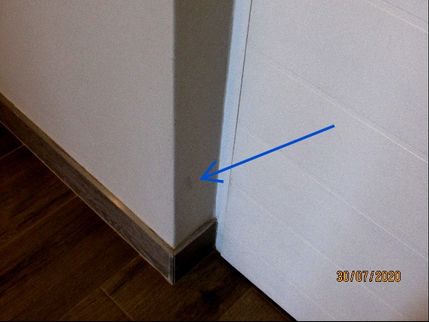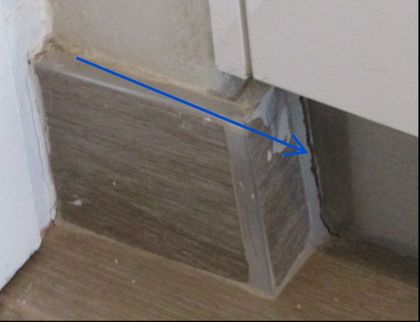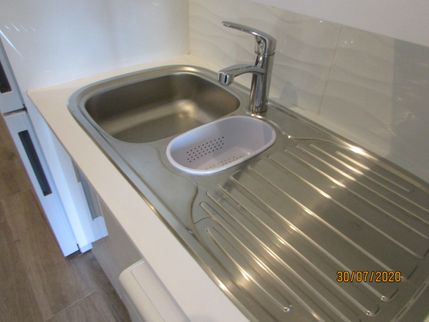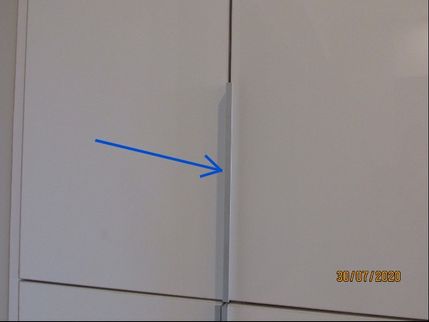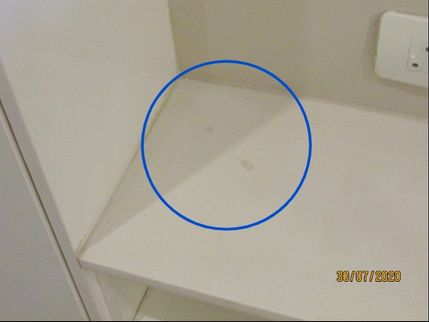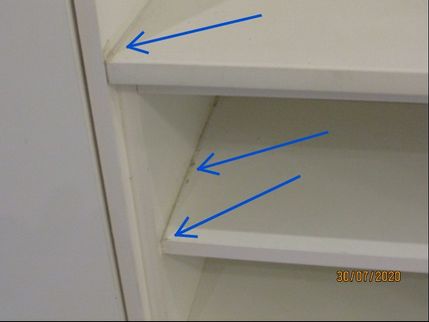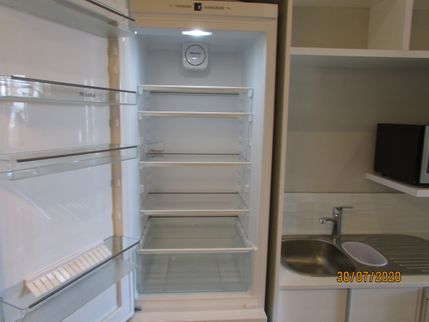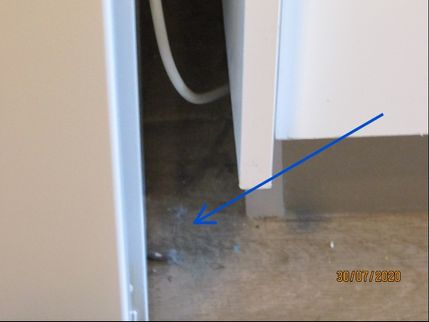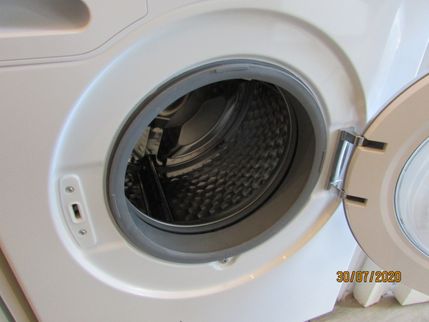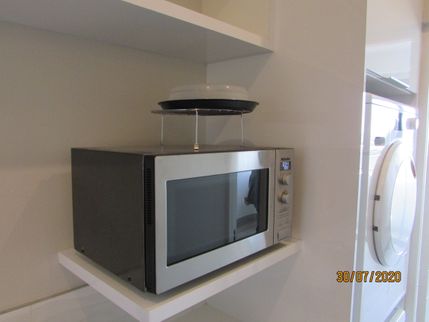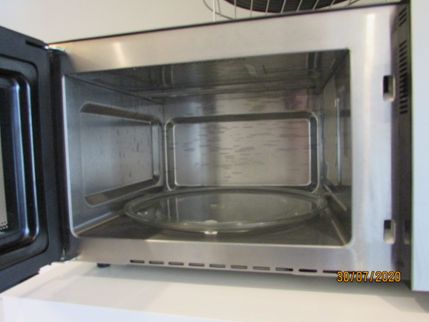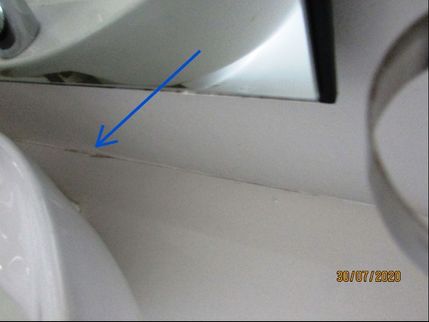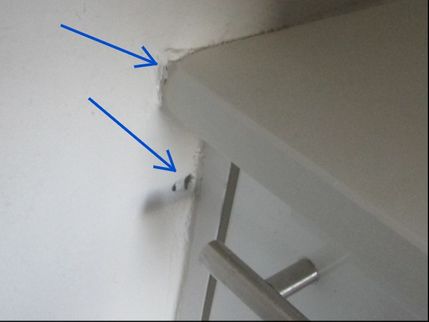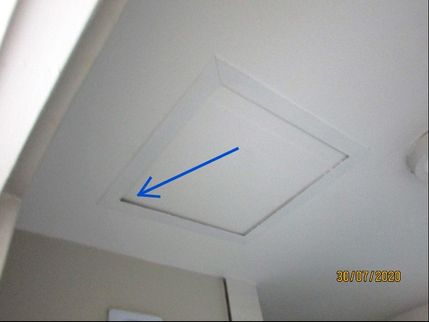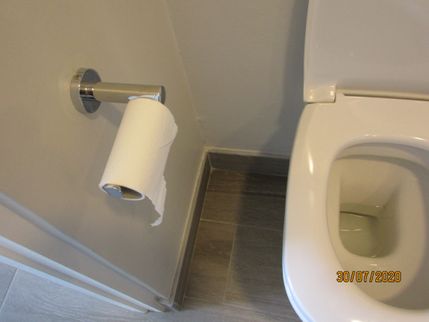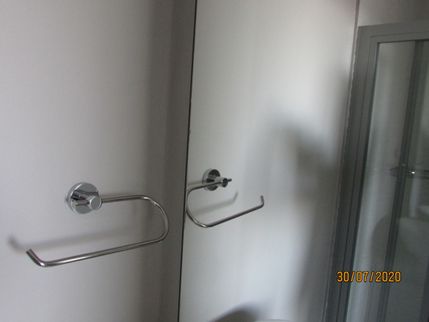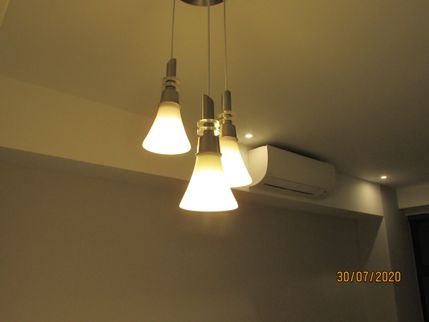The Scope and Purpose of a Home Inspection
Purchasing property involves risk
The purpose of a home inspection is to help reduce the risk associated with the purchase of a structure by providing professional observations about the overall condition of the structure. A home inspection is a limited visual inspection and it cannot eliminate all the risk. Some homes present more risks than others. I cannot control this, but I try to help inform you about what I don’t know during the inspection process. This is more difficult to convey in a report and one of many reasons why I recommend that you attend the inspection.
A home inspection is not an insurance policy
This report does not substitute for or serve as a warranty or guarantee of any kind. Home warranties can be purchased separately from insurance firms that provide this service.
A home inspection is visual and not destructive
The descriptions and observations in this report are based on a visual inspection of the structure. I inspect the aspects of the structure that can be viewed without dismantling, damaging or disfiguring the structure and without moving furniture and interior furnishings. Areas that are concealed, hidden or inaccessible to view are not covered by this inspection. Some systems cannot be tested during this inspection as testing risks damaging the building. For example, overflow drains on bathtubs are generally not tested because if they were found to be leaking they could damage the finishes below. My procedures involve non-invasive investigation and non-destructive testing which will limit the scope of the inspection.
This is not an inspection for NHBRC/Building Regulation compliance
Although this inspection report may refer to SANS (South African National Standards) and municipal by-laws, this report is not intended to be an NHBRC (National Home Builders Registration Council/National Building Regulation/local municipal by-law compliance inspection. Although some safety issues may be addressed in this report, this inspection is not a safety inspection and I am not required to identify all potential hazards.
During the construction, process structures are inspected for building regulation and bylaw compliance by NHBRC and municipal inspectors. They can view the construction process during the construction phase. The construction process is not viewable during inspections of finished homes. This limits the inspection. At some stage, all houses will fall out of building regulation and bylaw compliance after they are built, as these are continually updated. Updates are phased in by the NHBRC and municipalities in government-regulated timetables. There are generally no requirements to bring older homes into compliance unless substantial renovations and additions are being done.
For your information, the full Standards of Practice of the International Association of Certified Home Inspectors (“InterNACHI”) is available here.
My observations are based on my academic studies and workplace experience
Construction techniques and standards vary. There are different ways to build a house or install a system in a house. The observations in this report are based on my academic studies and workplace experience. Other inspectors and contractors may have some differing opinions. You are welcome to seek opinions from other professionals.
The scope of this inspection
This inspection will include the following systems depending on the type of inspection required: exterior, roof, structure, drainage, foundation, roof space, interior, plumbing, electrical and heating. The evaluation will be based on limited observations that are primarily visual and non-invasive. This inspection and report are not intended to be technically exhaustive.
Your expectations
The overall goal of a home inspection is to help ensure that your expectations are appropriate with the house you have bought or are proposing to buy. To this end, I assist with the discovery by showing and documenting observations during the home inspection. This should not be mistaken for a technically exhaustive inspection designed to uncover every defect with a building. Such inspections are available but they are generally cost-prohibitive to most homebuyers and homeowners.
Your participation was requested
Your presence was requested during this inspection. A written report will not substitute for all the possible information that can be conveyed verbally by a shared visual observation of the conditions of the property.
How to Read This Report
Getting the Information to You
This report is designed to deliver important and technical information in a way that is easy for anyone to access and understand. If you are in a hurry, you can take a quick look at our "Summary Page” and quickly get critical information for important decision making. However, we strongly recommend that you take the time to read the full Report, which includes digital photographs, captions, diagrams, descriptions, videos and hot links to additional information.
The best way to get the layers of information that are presented in this report is to read your report online, which will allow you to expand your learning about your house. You will notice some words or series of words highlighted in blue and underlined – clicking on these will provide you with a link to additional information.
This report can also be printed on paper or to a PDF document.
Chapters and Sections
This report is divided into chapters that parcel the home into logical inspection components. Each chapter is broken into sections that relate to a specific system or component of the home. You can navigate between chapters with the click of a button on the left side margin.
Most sections will contain some descriptive information done in black font. Observation narrative, done in colored boxes, will be included if a system or component is found to be significantly deficient in some way or if we wish to provide helpful additional information about the system or the scope of our inspection. If a system or component of the home was deemed to be in satisfactory or serviceable condition, there may be no narrative observation comments in that section and it may simply say “tested,” or “inspected.”
Observation Labels
All narrative observations are colored, numbered and labeled to help you find, refer to, and understand the severity of the observation. Observation colors and labels used in this report are:
- MAJOR CONCERN:Repair items that may cost significant money to correct now or in the near future, or items that require immediate attention to prevent additional damage or eliminate safety hazards.
- DEFICIENT:Repair and maintenance items noted during inspection. Please note that some repair items can be expensive to correct such as re-finishing hardwood floors, but are considered simply repair items due to their cosmetic nature.
- MAINTENANCE:A system or component requiring maintenance appears to be functioning as intended,but would benefit from minor repair, maintenance or improvement at this time. General deficiencies include patching, painting, cleaning, cleaning the gutters or changing the filters.
- PREVENTIVE:Any improvement to an area, system, component or condition that would help prevent a deficiency from occurring.
- MONITOR:An area, condition, system or component that is in need of monitoring appears to be functioning as intended and capable of safe usage in its present condition; however, your inspector's concern stated in the report should be monitored or further evaluated by an appropriate person.
- DEFERRED:Observation such as a buried oil tank that may require further investigation to determine the severity and / or urgency of repair.
- FUTURE PROJECT:A repair that may be deferred for some time but should be on the radar for repair or replacement in the near future.
- EFFICIENCY:Denotes observations that are needed to make the home more energy efficient as well as to bring the home up to modern insulation standards. This category typically includes windows and insulation. Other items, such as lighting and appliances, are not inspected for their energy status.
- COMPLETED:Items that were initially an issue but have since been completed.
- NOTE:Refers to aside information and /or any comments elaborating on descriptions of systems in the home or limitations to the home inspection.
- COMMENT:Detailed description of various aspects of the property noted during the inspection.
Summary Page
The Summary Page is designed as a bulleted overview of all the observations noted during inspection. This helpful overview is not a substitution for reading the entire inspection report. The entire report must be read to get a complete understanding of this inspection report as the Summary Page does not include photographs or photo captions.
Summary
MAJOR CONCERNS
- E2-1 Exterior:
Large areas of glass should be obvious to anyone who approaches it. If it isn’t, people could walk right into the glass and be injured, particularly if it is completely transparent and not made of “safety glass”. Stickers should be placed on both the fixed door and sliding door. This a safety issue!
DEFICIENCIES
- E2-4 Exterior:
There marks on the exterior door on the lounge/kitchen side.
- E2-5 Exterior:
There was a noticeable crack between the door frame of the exterior door and wall.
- E2-10 Exterior:
Paint damage above the skirting at the door that should be repaired.
- E2-11 Exterior:
A crack in the balcony wall did nor appear to be structurally significant. It should be repaired to prevent moisture intrusion into the wall.
- B-3 Bedroom:
There was a mark on the paintwork below the beam/duct in the bedroom.
- B-5 Bedroom:
The BIC and TV unit was in a reasonable condition, except where addition items or problems are specifically listed. All hanging rails were present and drawers in working order.
- B-7 Bedroom:
Slight damage was observed on the door frame. A crack was noticeable between the frame and wall.
- B-8 Bedroom:
There marks on the door on the lounge/kitchen side of the door.
- B-9 Bedroom:
The bathroom door was binding in the door frame on the hinge side making the door slightly difficult to close. In time this will cause loosening of the hinges and needed to be repaired to function properly.
- L-2 Lounge:
The grouting of the some tile joints was substandard on some tiles in the lounge area. The grouting was cracked and/or had holes.
- L-4 Lounge:
There was a mark on the wall at the entrance door and dirt or damage at the skirting.
- L-5 Lounge:
The skirting between the entrance door and cupboards had cracked loose from the wall.
- K1-3 Kitchen:
A handle on a cabinet door was missing. A paint mark was observed in one cabinet.
- K1-5 Kitchen:
There were marks on the top shelf and the shelf below on the low cabinet next to the stove cabinet.
- K1-9 Kitchen:
I recommend cleaning below and behind the dishwasher. There was dust build-up between the appliance and the floor unit.
- B1-2 Bathroom:
The wall behind the single bathroom basin was not adequately sealed to the counter top and could allow water to get behind the counter top. Moisture damage has resulted in the cabinet below. The cabinet had mould-like substances and water stains in the bottom section. The mould-like substances should be removed with a mixture of bleach and water. Seal the wall and basin properly with silicon.
- The caulking between the wall and basin top was defective.
- Caulking defect allowing water intrusion.
- Bad sealing and mark on the wall.
- Moisture damage and mould-like substances.
- Staining and moisture damage.
- B1-3 Bathroom:
The toothbrush tumbler was missing from the bracket fixed to the wall.
- E-1 Electrical:
There are uncovered knockouts or openings in the cover of the main electrical panel that exposes those who have access to the panel to shock hazards. These openings will need to be covered with approved panel block out covers.
- E-4 Electrical:
The light fitting and switch were defective in the lounge. At times when switched on the light flickered continuously. A suitably qualified registered electrician should check and repair the defective switch or light fitting. A addendum to the electrical CoC should be issued according to the Building Regulations.
- HCFV-1 Heating, Cooling, Fireplaces and Ventilation:
Both split unit air conditioners in the bedroom and lounge did not respond to the cooling setting when I used the remote controller. The system should be checked and corrected.
Preventives
- E2-8 Exterior:
The tiled balcony floor and skirting at the air conditioning unit was dirty and required a good clean. There was a mark on the wall at the air conditioning unit.
Notes
- GC-1 General Comments:
Unless defective items are specifically allocated to rooms or areas they should be regarded as generally defective items that can be found throughout the residence and/or property. In addition, photographs take up a lot of space, therefore, the photographs pertaining to a particular defect do not necessarily include all the photographs or defects of the particular defect identified.
- B-11 Bedroom:
The lower top hung window was hitting against the air condition unit when opened. No damage was noticed on the opening section at the time of the inspection.
- L-6 Lounge:
The interior door between the lounge and bedroom was discussed under the bedroom section.
- K1-8 Kitchen:
The dishwasher was switch on but not operated. No damage was noted internally or externally on the appliance.
- K1-10 Kitchen:
The washing machine was switch on but not operated. No damage was noted internally, in the soap dispenser or externally on the appliance. The filter appeared to be clean.
- B1-7 Bathroom:
Bathroom ventilation is important to prevent mould from forming. Moisture and condensation collects on the ceilings and walls from the lack of sufficient ventilation in bathrooms, creating an ideal situation for the formation of mould. I suggest that the door be left open and the fan be left on to provide through ventilation to disperse the steam and condensation resulting from showering.
- E-2 Electrical:
In case of an emergency, the main electricity disconnect is located on the distribution board.
- P-1 Plumbing:
If any of the basin or sink taps leak or cannot be shutoff, the angle valves under the sink and basin should be turned off. There is no way that the shower can be turned of other than at the mixer valve. Phone reception when there is a problem.
General Comments
Building Characteristics, Conditions and Limitations
Type of Building : Apartment
Approximate Area (m²): 42
Attending the Inspection: Landlord's Agent
Occupancy: Unoccupied
Weather during the inspection: Clear, Warm
Unless defective items are specifically allocated to rooms or areas they should be regarded as generally defective items that can be found throughout the residence and/or property. In addition, photographs take up a lot of space, therefore, the photographs pertaining to a particular defect do not necessarily include all the photographs or defects of the particular defect identified.
Exterior
Exterior Doors
Door Type: Aluminium sliding door (At balcony), Solid core (Entrance door)
Large areas of glass should be obvious to anyone who approaches it. If it isn’t, people could walk right into the glass and be injured, particularly if it is completely transparent and not made of “safety glass”. Stickers should be placed on both the fixed door and sliding door. This a safety issue!
The sliding door in the bedroom was functional at the time of the inspection.
The main entry door at the entrance to the lounge was functional except where addition items are specifically listed.
Exterior Window Frames
Window Material: Aluminium
Comment: The exteriors of the aluminium window frames, glazing and window sills were mainly in a good condition.
Decks, Balconies and Verandahs
Guardrail: Standard
The floor tiling on the balcony was in a reasonable condition, except where addition items or problems are specifically listed. No crack or chipped tiles were noted.
The tiled balcony floor and skirting at the air conditioning unit was dirty and required a good clean. There was a mark on the wall at the air conditioning unit.
The paintwork on the walls and ceiling were in a reasonable condition, except where addition items or problems are specifically listed.
Bedroom
Floors and Floor Materials
Floor Materials: Tile
Comment: Where visible, the tile flooring in the bedroom appeared to be functional. No chipped or cracked tiles were observed.
Walls, Ceilings, Skirtings and BICs
Wall Materials: Plaster and paint
Ceiling Materials: Plaster and paint
Skirting Materials: Tile
The paintwork on ceilings and walls were in a good condition. Addition items are specifically listed. No defects were noticeable at the time of the inspection.
The tile skirtings in the bedroom were in a fair condition at the time of the inspection.
The BIC and TV unit was in a reasonable condition, except where addition items or problems are specifically listed. All hanging rails were present and drawers in working order.
Interior Doors
Door Type: Panel doors
Comment: The panel doors were in a reasonable except where addition items or problems are specifically listed. No damage was noticeable on both faces of the doors.
Slight damage was observed on the door frame. A crack was noticeable between the frame and wall.
Windows
Window Glazing: Single pane
Window Frames: Powder coated aluminium
Window Styles: Top hung
Comment: All the tested windows were found to be functional and in a satisfactory condition, except where addition items or problems are specifically listed.
The lower top hung window was hitting against the air condition unit when opened. No damage was noticed on the opening section at the time of the inspection.
The roll down blinds on the sliding door and windows were in a satisfactory condition. No defects were noticed. The blinds appeared to relatively new.
Lounge
Floors and Floor Materials
Floor Materials: Tile
Where visible, the tile flooring in the lounge appeared to be functional except where addition items are specifically listed. No chip or cracked tiles were observed.
Walls, Ceilings, Skirtings and BICs
Wall Materials: Plaster and paint, Wall paper
Ceiling Materials: Plaster and paint
Skirting Materials: Tile
The paintwork on ceilings and walls were in a good condition. Addition items are specifically listed..
There was a mark on the wall at the entrance door and dirt or damage at the skirting.
Interior Doors
The interior door between the lounge and bedroom was discussed under the bedroom section.
Windows
Window Glazing: Single pane
Window Frames: Powder coated aluminium
Window Styles: Sliding
Comment: All the tested windows were found to be functional and in a satisfactory condition.
The roll down blinds on the window was in a satisfactory condition. No defects were noticed. The blinds appeared to relatively new.
Kitchen
Sinks, Vegetable Bowls, Wash Troughs, Taps and Mixers
Kitchen Sinks, Vegetable Bowls and Wash Troughs: Kitchen sink
Cabinets and Countertops
Counter Top Material: Caesarstone
Cabinet Material: Plastic laminate
All kitchen cabinetry appeared to be in a fair condition. Addition items are specifically listed.
The counter tops were in a fair condition. Addition items are specifically listed.
Ventilation Method
Vent Hood: Extractor Hood (Vented internally through a filter in the hood)
Appliances
Refrigerator: Operating
Dishwasher: Not operated
Clothes Washing machine: Not operated
Clothes drier: Operated
Stove/Oven/Hobs: Electric
Microwave Oven: Checked
The fridge was on at the time of the inspection. The fridge appeared to be operating as required. no damage or marks were observed inside or on the outside of the fridge.
The dishwasher was switch on but not operated. No damage was noted internally or externally on the appliance.
I recommend cleaning below and behind the dishwasher. There was dust build-up between the appliance and the floor unit.
The washing machine was switch on but not operated. No damage was noted internally, in the soap dispenser or externally on the appliance. The filter appeared to be clean.
The clothes drier switched on and operated and was in working condition. No damage was noted inside or externally on the machine. The filter appeared to be clean.
comment: The electric hob and electric oven responded to normal user controls. The seal of the oven door was functional at the time of the inspection. No damage was noted on either of the appliances. An oven pan was supplied with the oven.
The microwave oven was switch on and appeared to operate as required. The oven and related components were in a good condition.
General Kitchen Condition
The kitchen section of the unit was generally in a good condition with a few minor defects.
Bathroom
Basin and Cabinets
Tested
The basin, mixer tap and drains were functional. The basin was filled and allowed to drain. No leaking was noticeable at the time of the inspection.
The wall behind the single bathroom basin was not adequately sealed to the counter top and could allow water to get behind the counter top. Moisture damage has resulted in the cabinet below. The cabinet had mould-like substances and water stains in the bottom section. The mould-like substances should be removed with a mixture of bleach and water. Seal the wall and basin properly with silicon.
- The caulking between the wall and basin top was defective.
- Caulking defect allowing water intrusion.
- Bad sealing and mark on the wall.
- Moisture damage and mould-like substances.
- Staining and moisture damage.
Toilet
Toilet: Tested
Toilet Seat: Good condition
Cistern/Flushing System: Tested
The toilet was functional and responded properly when flushed. No leaks were observed.
Bath/Shower
Shower: Tested
The mixer tap, shower head and drain were in a satisfactory condition. The shower mixer tap was allowed to run and allowed to drain. The shower drain appeared to drain as required. No leaking was noticeable around the enclosure at the time of the inspection.
The operation of the shower doors was adequate at the time of the inspection.
Bathroom Ventilation
Type: Fan and door
Bathroom ventilation is important to prevent mould from forming. Moisture and condensation collects on the ceilings and walls from the lack of sufficient ventilation in bathrooms, creating an ideal situation for the formation of mould. I suggest that the door be left open and the fan be left on to provide through ventilation to disperse the steam and condensation resulting from showering.
The extraction fan was operative while the bathroom light was switched on.
General Bath Condition
Standard
Electrical
Electric Service Voltage Tested
Service Voltage: 220
Service Equipment
Electric Service Amperage: 60 amps
Main Electric Panel Location: On the left side of the entrance door on the wall
There are uncovered knockouts or openings in the cover of the main electrical panel that exposes those who have access to the panel to shock hazards. These openings will need to be covered with approved panel block out covers.
Lights, Switches, Plug points and Fixtures
Inspection Method: All accessible points tested
Electric Plug Points: Three wire receptacles, Two wire receptacles
All tested interior and exterior light fixtures and switches were functional except where additional items are reported.
The light fitting and switch were defective in the lounge. At times when switched on the light flickered continuously. A suitably qualified registered electrician should check and repair the defective switch or light fitting. A addendum to the electrical CoC should be issued according to the Building Regulations.
Comment: An earth leakage circuit breaker (ELCB) socket tester was used to test plug points. All tested plug points were functional.
Plumbing
Location of Water Shut Off
Water Service Supply
Water Pressure: The water pressure was acceptable during the inspection
Distribution Pipe
 Angle Stops Testing Note
Angle Stops Testing Note
Water Heaters/Geysers
Straps : Present
The geyser was operational with hot in the taps during the inspection.
Heating, Cooling, Fireplaces and Ventilation
Invoice -- Move-in Inspection Report
533 The Regency, 27 Matroosberg Rd, Waterkloof Heights, Pretoria
| $0.00 | |
| DUE |
THE HOME DETECTIVE
C/O Jurie Fourie
554 Alaska Road
Pretoria, South Africa, 0081
+27 74 892 2182
